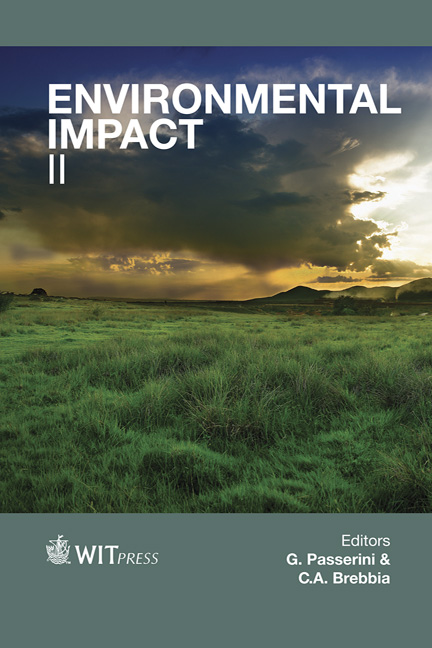Treatment And Use Of Wastewater In Mexicali, Baja California, Mexico
Price
Free (open access)
Transaction
Volume
181
Pages
11
Page Range
591 - 601
Published
2014
Size
983 kb
Paper DOI
10.2495/EID140501
Copyright
WIT Press
Author(s)
S. Romero, A. Villagomez, D. Trasviña, J. García, R. Gallegos, J. Reyes, J. Ramírez & F. Solís
Abstract
This study had, as its objective, the assessment of the current state of the treatment and use of domestic wastewater in the municipality of Mexicali, in the state of Baja California in Mexico. A diagnosis of the treatment process was undertaken and the quality of the effluent produced in 2010 by each wastewater treatment plant (WTP) was assessed. A comparison was then made with the limits established in the Mexican regulations for use of treated wastewater. Finally, an action plan was developed to improve the use of this resource. The results of the study show that none of the WTPs complied with the limits of the official Standard NOM-003-SEMARNAT-1997 for suspended solids (TSS) and biochemical oxygen demand (BDO5). The WTP of greatest interest is Arenitas, because its effluent is being used for agricultural irrigation. Concentrations of fecal coliforms in the effluent of this WTP ranged between 340 and 86,740 MPN/100 ml over a six month period, while the limit is 240 MPN/100 ml. The concentration of total suspended solids (TSS) was detected at between 32 and 116 mg/l, while the limit is 30 mg/l. BDO5 was detected at between 28 and 55 mg/l, while the limit is 30 mg/l. Only in the month of April did these measurements fall below the limit of 15 mg/l for grease and oil. Keywords: water pollution, use of treated wastewater, agricultural irrigation.
Keywords
water pollution, use of treated wastewater, agricultural irrigation.





